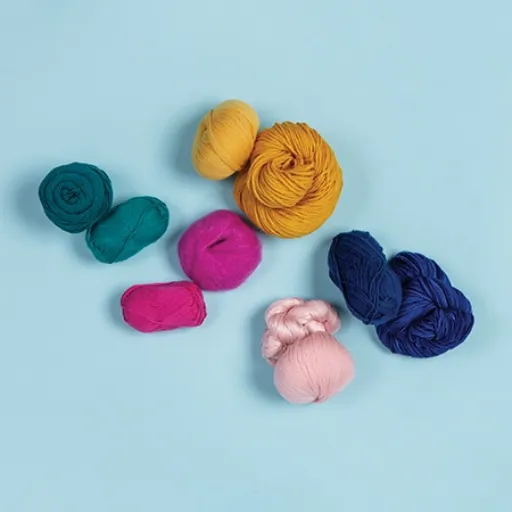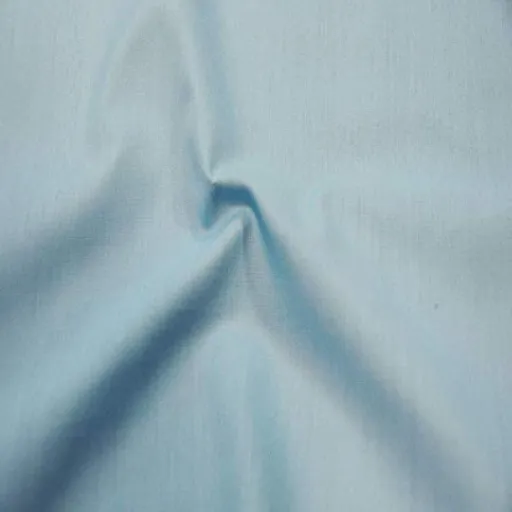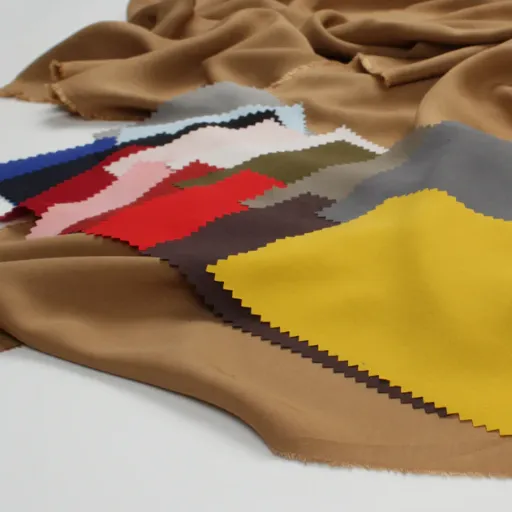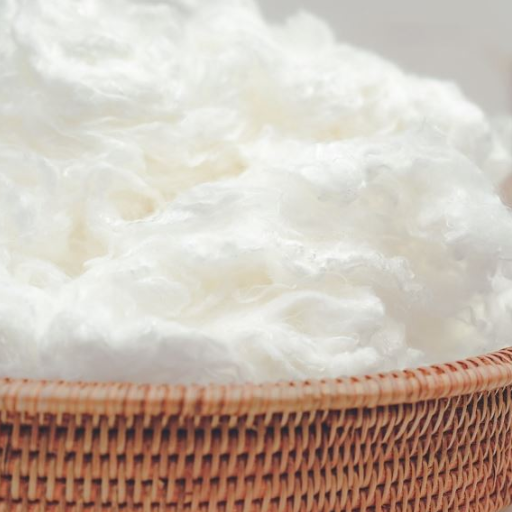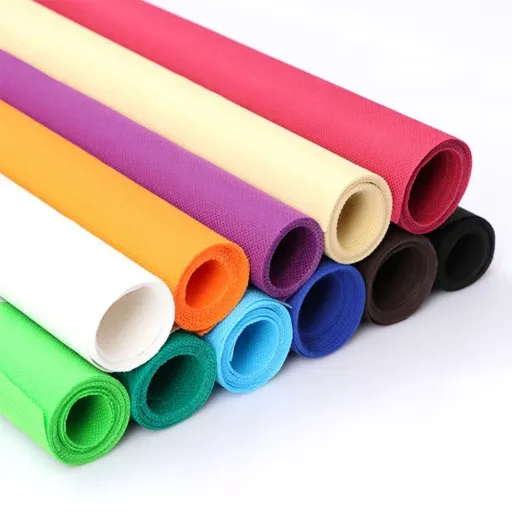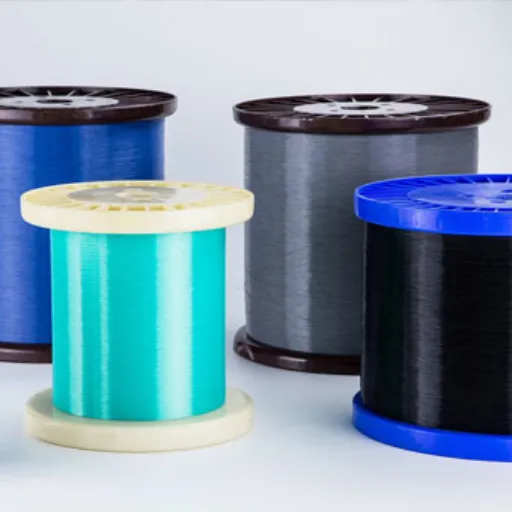Viscose rayon is often dubbed the “hybrid fiber” because it amalgamates the benefits of natural and synthetic fibers to create versatile, high-quality fabrics. But have you ever considered how this much-admired fiber is transformed from raw material into the garments we wear? This blog post will explain the complexities surrounding viscose rayon manufacturing in a detailed yet engaging way. From the sourcing of cellulose to the gaining of lustrous textile threads, every step has its own significance. Whether you’re a textile enthusiast, fashion designer, or merely curious about the fibers making up your clothing, this guide will tell you much about why viscose rayon has remained a favorite in the fabric world.
Introduction to Viscose Rayon

What is Viscose Rayon?
Viscose rayon is a type of semi-synthetic fiber derived from cellulose, a natural polymer found in plants, typically wood pulp. Despite being made from natural sources, it undergoes a chemical manufacturing process to be transformed into the smooth, silk-like threads widely used in textiles. This process makes it a hybrid material, combining traits from both natural and synthetic fibers.
Key Qualities of Viscose Rayon:
- Soft and breathable texture
- Excellent draping properties
- Comparable to cotton and silk in appearance
- Affordable alternative to silk
- Versatile applications in clothing and home furnishings
One of the key qualities of viscose rayon is its versatility. It is soft, breathable, and drapes well, making it comparable to cotton and silk in texture and appearance. These properties allow it to be used in a wide variety of clothing items such as dresses, blouses, and linings, as well as in home furnishings like curtains and upholstery. Its affordability in comparison to silk has made it a popular alternative for achieving a luxurious feel at a lower cost.
⚠️ Environmental Considerations
However, while viscose rayon offers many benefits, its production process raises some environmental concerns. The reliance on chemical treatments and the need for significant water resources during manufacturing have prompted increased attention to its ecological impact. Efforts are ongoing in the textile industry to improve production methods and develop more sustainable variations of viscose to address these challenges.
History of Viscose Production
The late 19th century marked the origin of viscose rayon, which scientists endeavored to create as a silk-like substance from cellulose. The first process of making viscose was introduced by the British chemists Charles Frederick Cross, Edward John Bevan, and Clayton Beadle in 1891. They developed a technique to dissolve cellulose from wood pulp or cotton linters, creating a viscous solution that was afterwards regenerated into fibers. The word viscose comes from the viscous nature of the solution.
Timeline of Viscose Development:
| Year | Milestone |
| 1891 | First viscose process developed by British chemists |
| Early 1900s | Commercial manufacture begins |
| 1920s-1930s | Worldwide expansion of viscose production |
At the beginning of the 20th century, the commercial manufacture of viscose began, finally revolutionizing the textile industry. It was an inexpensive substitute for natural silk and was used widely for apparel and household textiles. By virtue of the versatility and the ability to mimic the texture of natural fibers, viscose production expanded worldwide in the 1920s and 1930s. The easy dyeing process for viscose fibers and their ability to blend with others helped the fabric to become buyed or used worldwide.
With improvements in manufacturing processes, production of viscose got perfected and became more efficient. However, certain things have been concerning people for some time now, including deforestation for raw materials for viscose production and immense chemical wastes that arise with traditional viscose making processes. Now, with rising awareness and demand for greener textiles, there are serious attempts to bring in sustainable practices in viscose production so that it does not affect the environment too much. This is a win-win situation as it proves that, as an industry, it weighs innovation against environmental consideration.
Properties of Viscose Fiber
It is extremely soft and absorbs moisture; this is why it has become a great choice for the fashion and home textile industries. It feels wonderfully good against the skin because it imitates the smooth texture of natural fibers such as cotton or silk. Hence, viscose is preferably used in the apparel category for making dresses, blouses, and undergarments, as well as in soft furnishings for bed linen, for example, and curtains.
✅ Advantages
- Excellent draping properties
- High moisture absorption
- Superior dye absorption for vibrant colors
- Soft, silk-like texture
❌ Limitations
- Wrinkles easily
- Low resilience after stretching
- Reduced strength when wet
- Not suitable for heavy utilization
One of the other important properties of viscose is that it hangs well. The fiber has a fluid nature, allowing the making of stylish flying garments, and hence the fiber is bestowed to the high-end category. Also, it is one of the most absorbent fibers: it absorbs dyes completely, thus producing very bright colors, which often fare better than those on many other fabrics.
Consequently, despite the many good qualities, several limitations affect viscose. It wrinkles more easily, and it is not resilient, i.e., it does not snap back after being stretched. When it comes to dry conditions, viscose might serve great durability, but while wet, its strength shall greatly reduce. Hence depending on circumstances, it is labeled unworthy for heavy utilization. However, with the improving methods of production, the aim is to remedy these weaknesses while also addressing sustainability concerns.
Raw Material Acquisition and Preparation
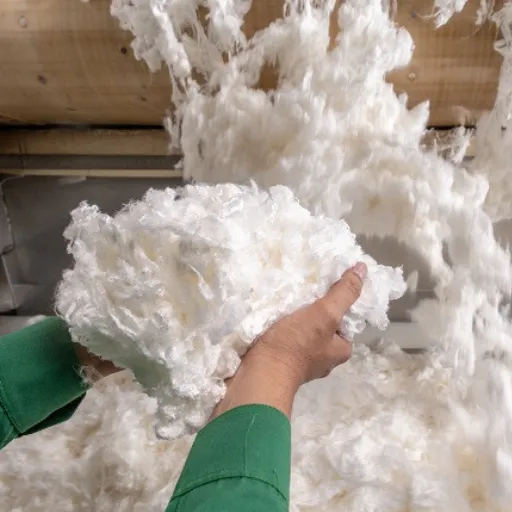
Sources of Cellulose for Viscose Fiber
Cellulose, the principal raw material for viscose fiber, is generally sourced from wood pulp, cotton linters, and other plant materials. Since pulp is available in large quantities and contains a high percentage of cellulose, it is widely used. This pulp usually comes from fast-growing trees such as eucalyptus, spruce, and pine, which are grown on plantations purely for industrial use. These trees give a highly sustainable and efficient source of cellulose if managed responsibly.
Primary Sources of Cellulose:
- Wood Pulp: Most common source from fast-growing trees (eucalyptus, spruce, pine)
- Cotton Linters: Short fibers attached to cotton seeds after ginning – eco-friendly waste utilization
- Alternative Sources: Bamboo and agricultural residues for sustainable potential
Another significant source for cellulose is cotton linters-the short fibers which are still attached to cotton seeds in the ginning process. Cotton linters are considered an excellent eco-friendly option because they utilize what would otherwise be waste, a by-product of cotton processing. These fibers naturally contain high cellulose, and only a small amount of processing is required to get them ready for manufacturing of viscose.
Other more recent developments look into alternative sources such as those derived from bamboo or other agricultural residues. These alternatives are being touted on grounds of sustainability potential. Whatever the source, the cellulose undergoes thorough purification in its preparation so that it matches the quality requirements for viscose fiber production. Source selection is crucial for balancing performance and environmentally conscious choices.
Preparation of Cellulose Pulp
The preparation of cellulose pulp entails several steps to ensure that it fulfills the specifications for viscose fiber production. In essence, raw materials like wood, bamboo, or agricultural residues are treated to release cellulose. This release is normally effected through various mechanical and chemical treatments, in order to separate the cellulose from lignin, hemicelluloses, and other non-cellulosic materials.
Cellulose Pulp Preparation Process
The cellulose so isolated is then purified. Washing and bleaching are commonly carried out to eliminate impurities and reach the level of whiteness required. The objective is to have a clean, consistent cellulose pulp with a high degree of purity and uniform quality for convenient downstream processing.
Thereafter, it is dried and compressed for shipment or immediate use. This process preserves the cellulose pulp in optimal condition, ready to be consumed for viscose purposes. Usually, a manufacturer combines each of these steps to produce a good-quality product balancing performance and sustainability.
Impact of Raw Material Sourcing on Sustainability
Raw material sourcing plays a vital role in determining the sustainability of production processes. The source and procurement methods for raw materials directly affect the environment, society, and economy. For instance, sourcing from well-managed forests or using agricultural residues limits deforestation, thus conserving biodiversity and carbon emissions.
🌍 Sustainability Impact Areas
Environmental
Forest conservation, biodiversity protection, reduced carbon emissions
Social
Fair wages, safe working conditions, community engagement
Economic
Circular economy principles, waste reduction, resource efficiency
Sourcing is equally important in fulfilling social impacts. Ethical sourcing entails fair wages to workers, safe working conditions, and engagement with local communities that contribute positively to the lives of the workers and local populations. Transparency and adherence to global sustainability standards might thus save a manufacturer from implementing unscrupulous practices that exploit vulnerable communities.
On the other hand, sustainable raw material sourcing often coincides with the principles of a circular economy that embrace recycling or reuse toward waste reduction. Infusing green sources with traceability helps companies become greener while earning greater acceptance from green consumers. This network of interaction leads to the sustenance of resources over time, which also corresponds to global efforts toward environment.
Finishing Processes for Viscose Fabric
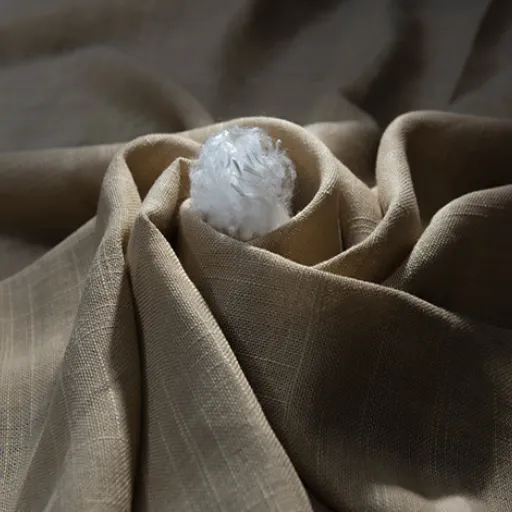
Finishing Techniques Used in Viscose Fabric
Viscose fabric undergoes a variety of finishing techniques to enhance its texture, durability, and visual appeal. One of the most common processes is mechanical finishing, which can include calendaring to give the fabric a smooth and polished surface, or sanforizing to reduce shrinkage during use and washing. These techniques improve the fabric’s practicality, making it more suitable for a range of applications, from clothing to home textiles.
Types of Finishing Techniques
🔧 Mechanical Finishing
- • Calendaring for smooth surface
- • Sanforizing to reduce shrinkage
🧪 Chemical Finishing
- • Softening agents
- • Wrinkle-resistant finishes
- • Flame-retardant coatings
🎨 Aesthetic Finishing
- • Dyeing processes
- • Screen printing
- • Digital printing
Chemical finishing is another essential step in the production of viscose fabric. This can involve treatments such as softening agents to increase its softness and pliability, or wrinkle-resistant finishes to make the fabric more durable and easier to maintain. Flame-retardant coatings or water-resistant finishes may also be applied, depending on the intended use of the fabric. These processes ensure that viscose fabric meets the functional requirements of various industries.
Additionally, dyeing and printing are significant finishing techniques used to create vibrant colors and intricate patterns on viscose fabric. The material is known for accepting dyes well, resulting in rich, uniform colors. Printing methods, such as screen printing or digital printing, enable the addition of detailed designs. Together, these finishing techniques not only elevate the fabric’s aesthetic qualities but also broaden its versatility and appeal in the textile market.
Properties of Finished Viscose Fabric
Potential plotting of silk from its smoothness and softness finish viscose fabric. This is a good attribute to attract its usage in making clothing and also for materials requiring the presence of a delicate touch. The finishing operations assure the creation of a gorgeous look while simultaneously making the fabric light and breathable, giving the wearer comfort in all circumstances.
Key Properties After Finishing:
| Property | Description |
| Texture | Smooth, silk-like softness |
| Color Retention | Rich, bright, uniform coloring |
| Drapability | Excellent flow and hang properties |
| Durability | Improved strength with reduced shrinkage |
Another property of finished viscose is the rich, bright coloring it retains. Being highly absorbent, finished viscose readily absorbs dye during the finishing operations, resulting in colors that are uniform and enduring. With this key property, along with modern printing techniques, complex patterns and designs can be printed. Thus this gives viscose fabric the versatility for modern garments, home decoration, and so on.
Wonderful drapability provides a finished viscose fabric with the ability to flow well in any application. These dimensions of finishing ensure better strength with less shrinkage and hence allow finished viscose more performance for the long run. These advantageous features earn it an all-encompassing appeal in the textile market, thereby confirming that it is assessed as a practical and beautiful fabric.
Applications of Viscose Rayon in Textiles
The viscose has the broad range of applications in the textile world because it is versatile, cheap, and practically good. Such fabrics are made mostly into clothes with dresses, shirts, and blouses with lining, though the fabric is soft, with excellent moisture permeability and natural drape. Besides this, it can be aptly called a second skin because it feels so comfortable to touch and wears well.
👗 Apparel Applications
- • Dresses and blouses
- • Shirts and linings
- • Undergarments
- • Fashion garments
🏠 Home Textiles
- • Curtains and drapes
- • Upholstery materials
- • Bed linens
- • Interior decoration
🏥 Non-Woven Applications
- • Medical gauze
- • Sanitary napkins
- • Industrial wipers
- • Biodegradable products
Applications of this fabric are quite confined to curtains, upholstery, and bed linens in home textiles, where the smoothness of finish and ability to retain bright colors of these products add to their glamour. Besides, the attraction for these fabrics in interior decoration comes from their ability to absorb colors.
The fabric also finds application in the making of non-woven textiles usable as medical gauze, sanitary napkins, and industrial wipers. Here, the attraction is from an absorbent nature and yet soft, a biodegradable characteristic. This extended list of features makes the material common in nearly all the sectors of the textile industry.
Technological Advancements in Viscose Production
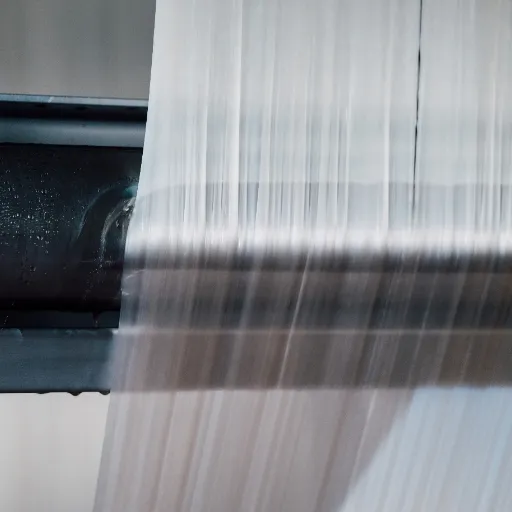
Closed-Loop Systems in Viscose Manufacture
Closed-loop methods in viscose manufacture are innovative processes that tend to lessen the environmental impact on textile production, furthering the sake of sustainability. These systems capture-process chemicals and recycle them instead of letting them eventually get into the environment. This process greatly minimizes their disposal into the environment and chemical emissions with the major part of environmental criticism directed towards the traditional viscose manufacture.
🔄 Closed-Loop System Benefits
Chemical Recovery
Up to 99% of chemicals recovered and reused
Water Conservation
Significant reduction in water usage
Environmental Impact
Minimal emissions and waste disposal
During production, the closed-loop system recovers solvents such as carbon disulfide and sodium hydroxide. The recovered chemicals are purified and recycled in the production process, thereby maintaining approximately a complete circle with minimal depletion of secondary resource material. As such, the system lessens the ecological load of the industry and sustains resource conservation by reducing requisition of raw materials, thus increases recycling of raw materials, which in turn lowers production costs.
The closed-loop technique lifts the slow-paced transition of the viscose industry to a greener one, fueled by growing consumer awareness and regulatory impetus for environmentally responsible practices. Though still far from being universal, the adoption of closed-loop systems by many advanced manufacturers is already a neck-to-neck race against time to catch eco-standards and stricter industry regulations. This trajectory realizes a very important step towards sustainability without compromising quality in the production of viscose.
Innovations in Chemical Treatment
Innovations in chemical treatment have made it possible to modernize the viscose fiber production process, all in an attempt to lessen environmental impact while preserving the efficiency and quality of production. One of the emerging trends is the optimization of chemical recovery systems. These systems allow for hazardous agents such as carbon disulfide and sodium hydroxide to be captured and reused, radically minimizing waste generation as well as toxic emissions into the environment.
Innovation Areas in Chemical Treatment:
🔧 Chemical Recovery Optimization
Enhanced capture and reuse of hazardous chemicals like carbon disulfide and sodium hydroxide
🧪 Alternative Solvents
Development of safer, greener chemicals to replace traditional toxic substances
🧬 Enzymatic Treatments
Biological processes replacing chemical-intensive methods for better sustainability
Another big improvement has come in the avenue of alternative solvent usage to replace traditionally noxious chemicals. Research keeps bringing forth safer and greener chemicals to lessen the ecological impact caused by the production of viscose. These newer alternatives reduce the environmental damages traditionally caused and also promote workplace safety through limitation of exposure to hazardous substances.
Further enzymatic improvements have offered more sustainable options for treating processes by substituting chemical ones with biological ones. Using enzymes to break down raw materials could be more effective and would require fewer chemical-intensive processes while consuming less energy. These improvements therefore constitute a very important step toward the greener production of viscose fiber in line with modern sustainability goals.
Future Trends in Viscose Fiber Technology
Thus, the future of viscose fiber technology rests in creating production processes that are sustainable and eco-friendly. One of such innovations is the closed-loop system, which minimizes waste generation and significantly limits the emission of harmful substances into the atmosphere. These systems retain and reuse chemicals that are released during gaseous emission from the production stage, hence, complying with environmental standards and lowering the overall environmental footprint of viscose manufacturing.
🚀 Future Technology Trends
🔄 Advanced Closed-Loop Systems
Enhanced chemical recovery with minimal environmental footprint
🌱 Alternative Raw Materials
Agricultural residues and recycled cellulose materials
🧬 Enzyme-Based Technologies
Biological processes for energy-efficient production
A second line of development toward better sustainability, presently also moving into application, is increased use of alternative raw materials. Research and development in the sourcing of biodegradable and renewable feedstocks, for instance, agricultural residues or recycled cellulose ligno-cellulosic materials, could reduce dependency on virgin wood pulp. This constitutes a circular approach, which helps decrease deforestation and gives recycling a way into production lines, thereby making the overall fiber more sustainable.
Another area of improvement lies in enzyme-based technologies. These emerging technologies could employ enzymes to minimize the use of harsh chemicals during the treatment process and, in so doing, allow manufacturers to produce their materials more efficiently and with less energy. This also leads directly to the quality enhancement of viscose fibers while adjusting production practice with current sustainability goals and, thus, should be of top concern to industry within the next few years.
Environmental Considerations and Sustainability
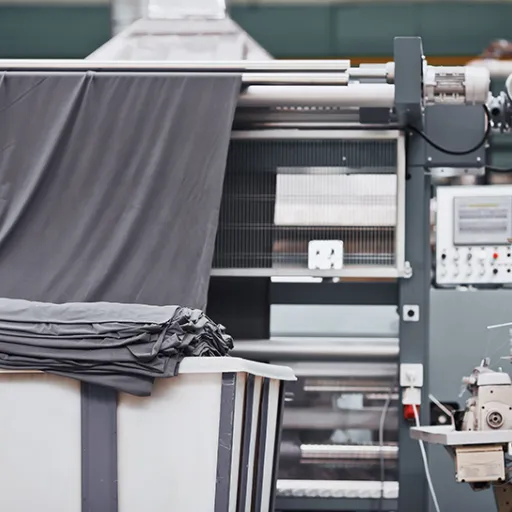
Challenges in Chemical Waste Management
Chemical waste management presents profound challenges within industrial processes, particularly for industries highly dependent on chemicals, such as in textiles and manufacturing. Disposal into the environment of hazardous chemicals is one issue due to contamination threats. Silly handling or disposal will cause soil and water pollution, killing many ecosystems and causing death to humans. Paying for standards to comply with is generally very high; also, it becomes very complicated if the industry is operating in a country where different environmental regulations exist.
⚠️ Key Challenges in Waste Management
Environmental Contamination
Soil and water pollution from improper chemical disposal
Regulatory Compliance
High costs and complex international regulations
Waste Volume
Large quantities requiring expensive treatment processes
Another is wastage of chemicals at the very source. Many industrial processes generate wastes to considerable amounts, and somehow most of these wastes have to be treated, very often even at great costs, to reduce their environmental effects. A transition to greener approaches by the adoption of, for instance, cleaner production technologies or recycling of chemicals internally need enormous initial investments; sadly, such changes are the only way to go to reduce waste generation in the long run.
Addressing sustainability issues concerning the public and the other stakeholders is something the industry has to attend to as well. Consumers and governments have begun to demand transparency in production practices and environmental friendly methods to be used. Such demands push companies to innovate and initiate sustainable approaches toward waste management in enzyme-based processes or even scaling down toxic use from chemicals. Stricter enforcement, investment in greener technologies, and the collaboration of stakeholders within the industry can accelerate the pace for achieving sustainable chemical waste management.
Eco-Friendly Solvents and Responsible Sourcing
Processing of viscose fibers employs chemical solvents that can be risky towards the environment and health of life. Eco-friendly alternatives have come to the fore, setting the industry along a path for sustainability. Ionic liquids and organics-based alternatives are probably being developed for use with viscose fibers because of their reduced toxicity and therefore of less impact on the environment. These substitutes keep harmful emissions away while ensuring safer processing conditions.
🌿 Sustainable Solutions
Eco-Friendly Solvents
Ionic liquids and organic alternatives
Certification Standards
FSC and PEFC certified materials
Responsible Sourcing
Sustainably managed forests
Another facet of sustainability in viscose fiber production is the responsible sourcing of raw materials such as wood pulp. These selling practices ensure that raw materials are procured without causing deforestation and damage to biodiversity. FSC (Forest Stewardship Council) or PEFC (Programme for the Endorsement of Forest Certification) standards provide guidelines for ethical sourcing to ensure that the materials are sourced from responsibly managed forests.
The second major contribution toward lessening the environmental impact is the use of ecological solvents and materials obtained through responsible sourcing. This results in decreased box emissions, minimized chemical pollution, and preservation of global forest ecosystems. This transition addresses those concerns in the environment while simultaneously addressing and catering to consumer concerns for transparency and sustainability in textile making.
The Shift Towards Sustainable Viscose Production
The shift towards sustainable viscose production machinery has gained momentum with respect to environmental issues and consumer preferences. Viscose is a much-wanted textile born of wood pulp. The wood pulp viscose-making processes are heavily laden with chemicals, and any pollution thus caused may unfavorably impact a few lucky, well-forested lands far away. Now the producers give precedence to raw materials coming from forests, which are certified to be sustainably managed. This maintains that the sourcing of wood does not contribute to deforestation, thereby protecting biodiversity and curtailing ecological aberrations.
🌍 Sustainable Production Pillars
Certified Sourcing
Sustainably managed forests
Closed-Loop Systems
Chemical recycling and reuse
Transparency
Traceability and accountability
A few new-fangled ways of manufacturing lessen the environmental impact of viscose-making processes. Closed-loop systems recycle and reuse chemicals within the production in order to avoid wastes, and ensure that the incineration of wastes does not harm ecosystems in nature. It will increase the efficiency of resource use, correlating to the international efforts in checking industrial pollution. Other operators reduce chemical hazards to the environment even further by using alternative solvents that are less harmful.
Transparency and traceability have become very important in ensuring that production of sustainable viscose can be verified. By ensuring that the sourcing practices and manufacturings processes can be verified, companies will become accountable and thus able to satisfy the ever-growing consumer demand for ethically produced textiles. Certification and environmental partnerships engender trust and help to provide an industry-wide standard. These practices together, due to their innovativeness and responsible sourcing, bring about the transformation of viscose into a truly sustainable textile choice.
Frequently Asked Questions (FAQ)
❓ What is the process for producing viscose fiber?
The process of production of viscose fiber starts with converting some form of cellulose, which is usually obtained from wood pulp, into a viscous liquid. The viscose is then extruded or spun through spinnerets into continuous filaments or staple fibers, which are then spun into yarn.
❓ How does cellulose xanthate relate to the production of viscose?
Cellulose xanthate is the important intermediate in the production of viscose fibers. It is simply formed when cellulose reacts with carbon disulphide and alkali, making it possible for the cellulose to dissolve and form that viscose solution which is needed for spinning into rayon filaments.
❓ What are the main types of rayon that are manufactured?
A major category of rayon manufactured is regular viscose and cuprammonium rayon. The regular viscose is made by the conventional viscose fiber production process, and the cuprammonium rayons are produced using a quite different solvent system, leading to a substantive difference in both physical properties and applications.
❓ How would the spinning process embellish or detract from the quality of the rayon yarn?
The process of spinning has a very pertinent role to play in quality control of rayon yarn. Any uncontrolled event may hamper the spinning process or cause defects in the filament of rayon, and finally diminish the comfort properties of the product as well as longevity.
❓ Why does one say that viscose is an environmentally friendly fiber?
Being made from renewable resources in the form of wood pulp, viscose is considered an environment-friendly fiber. Furthermore, therefore, there have been more or less recent developments in viscose fiber production such that the environmental pollution factor is addressed by, for example, recycling of chemicals such as sulfuric acid used in the process.
❓ What are some of the physical properties of viscose fiber?
Viscose fiber exhibits various desirable physical properties, including softness, breathability, and a lustrous surface, thus allowing it to be employed in a wide range of applications, from apparel to home textiles.
❓ How do rayon manufacturers maintain the quality of their products?
To ensure quality, rayon manufacturers subjected the processes of viscose fiber production to stringent production conditions. Control is maintained over raw materials, viscose solution parameters, and all steps of the spinning process to reduce any defects in rayon filament.
❓ How important is the global viscose fiber market?
The global viscose fiber market holds importance due to its wide application in the textile industry. Increasing annual production capacities on a global scale, especially optics Asian Pacific Region has taken it to greater dimensions in the fiber market and towards sustainable textile growth.
References
📚 Sources and Further Reading
-
How is Viscose Made? – APRayon – An overview of the viscose production process, starting from sustainably-produced wood pulp.
-
Viscose Rayon Fiber Manufacturing Process – Textile Sphere – A detailed explanation of the steps involved in manufacturing viscose rayon, including steeping, shredding, aging, and spinning.
-
Viscose Staple Fiber, Manufacturing Processes, and Properties – Textile School – Insights into the production of viscose staple fiber, starting with cellulose processing and immersion in caustic soda.
-
Viscose Rayon Manufacturing Process – Textile Learner – A step-by-step guide to the viscose rayon production process, covering steeping, pressing, shredding, aging, and more.









